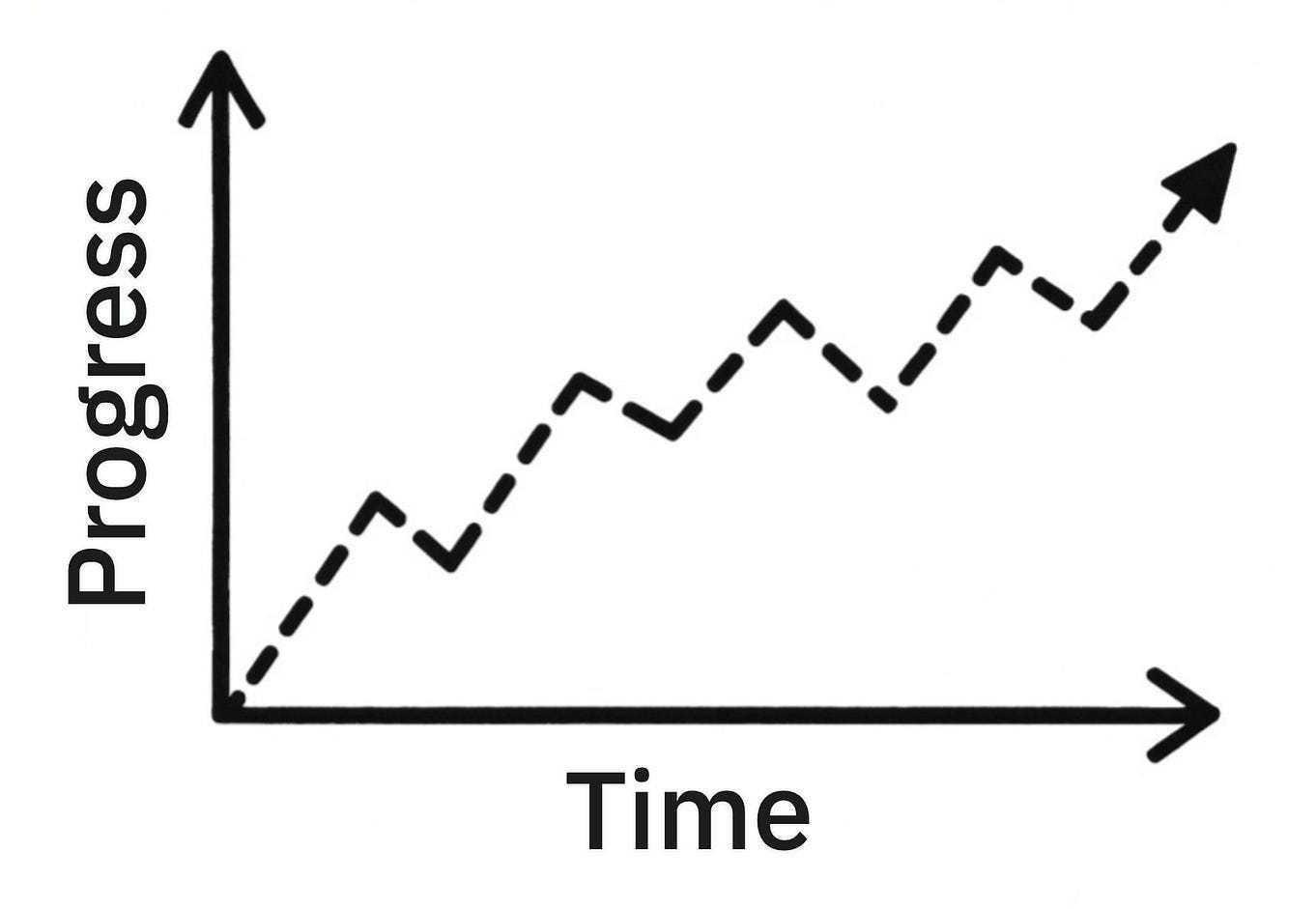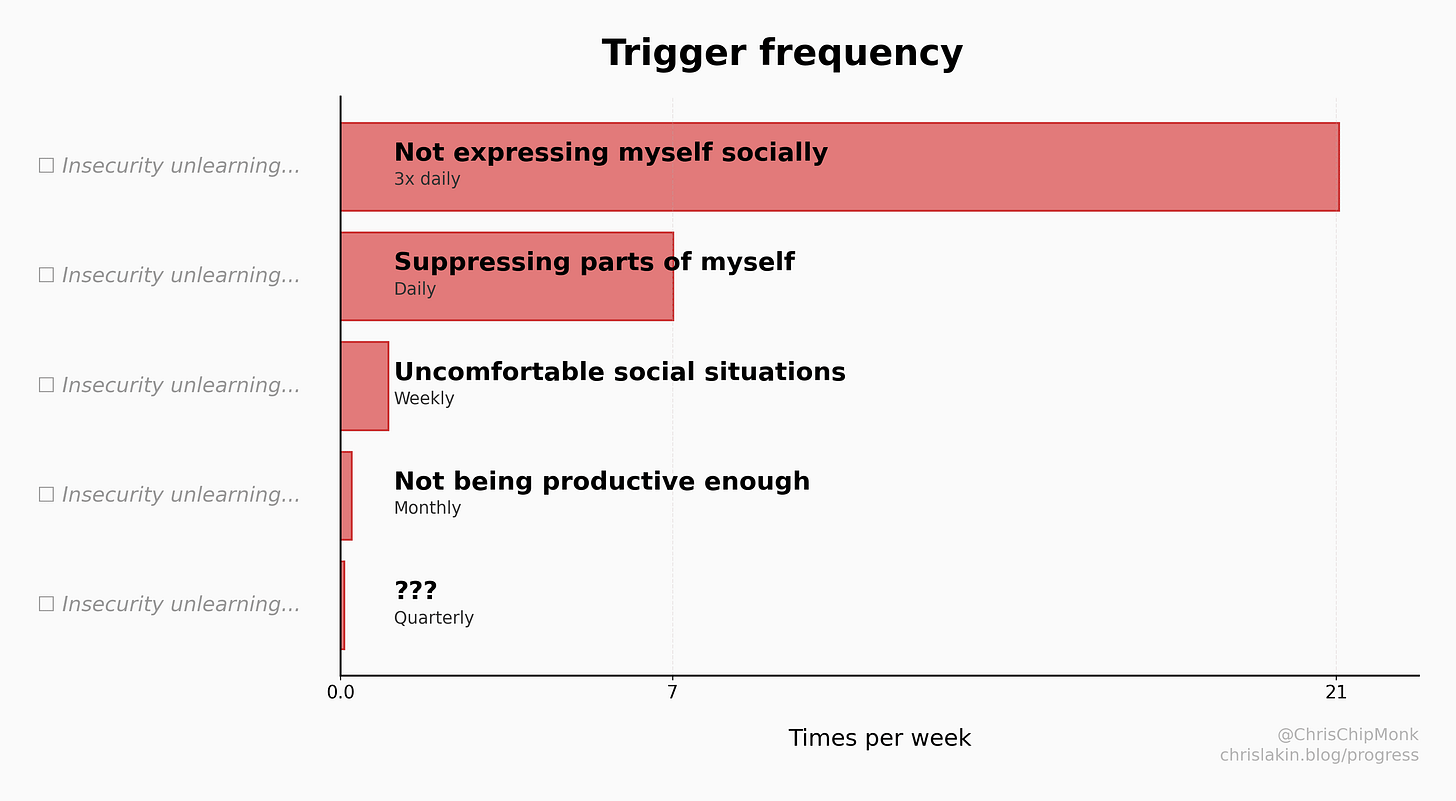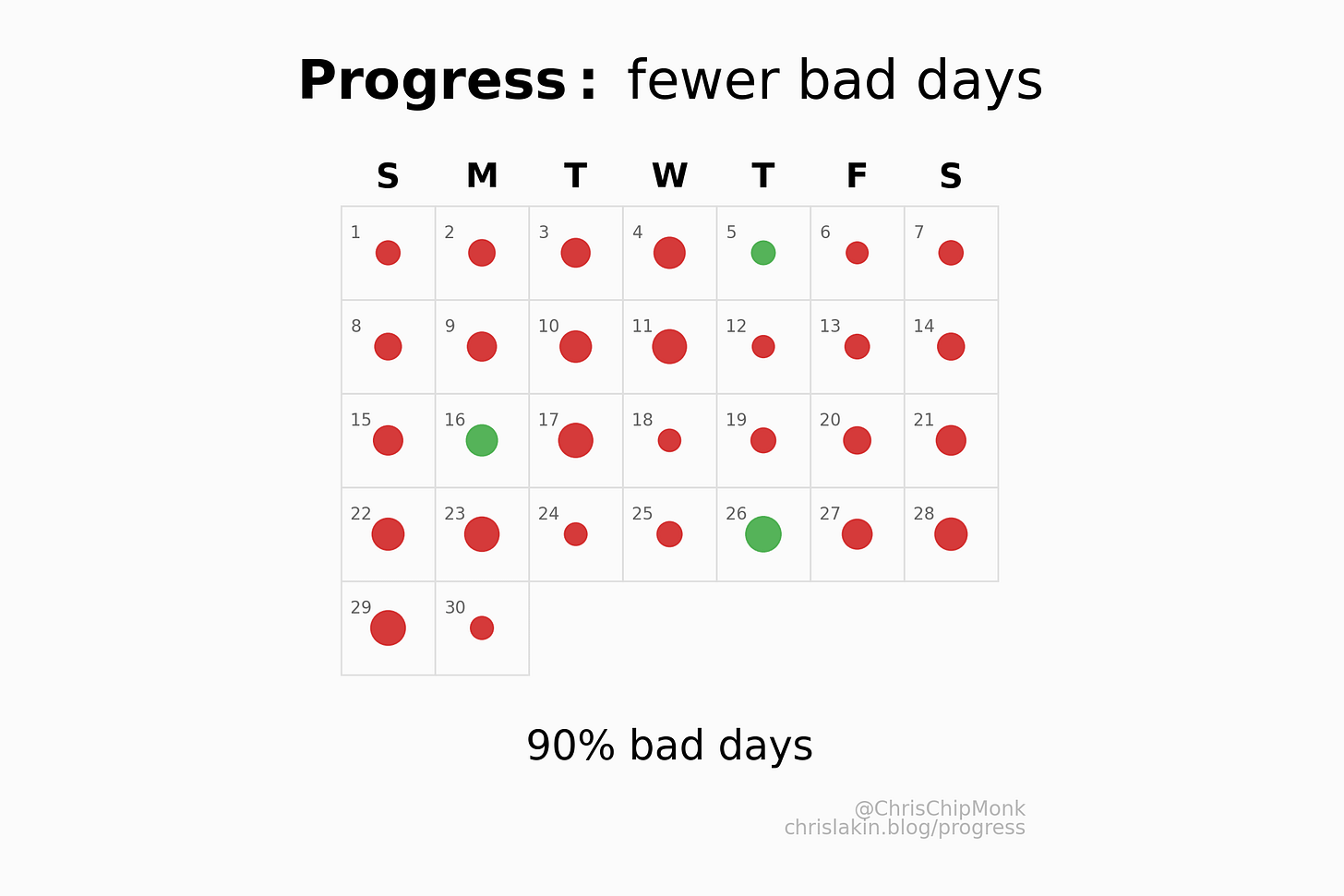My model of progress was suboptimal
I used to believe that progress with insecurity looks like this—and it fucked me up:
I had terrible neck pain for years. Eventually, one day, I had an insecurity breakthrough and experienced sudden relief. This relief continued for a few months, so I began to think my neck pain was a thing of the past.
This is not what happened.
Soon I began to notice moments where my neck was in great pain.
So I got worried: Relapse?? Was all of my progress a lie????
To better understand what was going on, I started tracking every moment my neck felt tense. I knew that my neck used to trigger in situations where I felt I wasn’t fully expressing myself socially and a few others — was this still the case?
I discovered my neck wasn’t triggering in these old situations. It was mostly fine then. Instead, it was triggering in other situations I’d never noticed were triggers—for example, when I felt like I wasn’t “being productive enough”.
I’d never noticed this was a trigger—but, well, I also don’t worry about my productivity all that often.
This made everything click: I realized my neck pain didn’t have a single cause—instead, it was a symptom created by multiple insecurities. Some of these insecurities related to social interaction, others related to productivity, and yet more were still to be discovered.
So even though I had unlearned some of the social insecurities that triggered my neck pain, other insecurities remained.
My insecurities appeared to follow a power law: a few were quite common, and the rest formed a long tail of less common, “dormant insecurities”.
What surprised me was that any insecurity could trigger debilitating neck pain. I’d expected progress to look like my neck pain gradually disappearing. Instead, progress looked like debilitating suffering, but less and less often. The metric to track wasn’t “how good do I feel today?”, but “how frequently are my bad days?”
Now that I had a better model of progress, new moments of neck pain actually became exciting: “My neck is tense—I’ve discovered new insecurities to unlearn! If I unlearned these, my neck pain could become even less frequent!”
V3. 2025 May 5 – 2025 Nov 8.







Good one! Another framing I like is that progress is mostly about speed of recovery, which cashes out similarly to your framing, but tracks a slightly different element.
I really like the graphics 👌